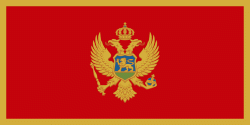Kolašin Municipality (Opština Kolašin)
Kolašin Municipality is one of the municipalities of Montenegro. Located in the northeastern part of Montenegro, municipality is part and unofficial centre of Morača region, named after Morača river. The centre is town of Kolašin.
Kolašin is one of the centres of Montenegro's mountain tourism. Although Žabljak is considered more attractive destination, Kolašin has the advantage of being easily accessible by road and rail. Kolašin is located on the foot of Bjelasica and Sinjajevina mountains, which offer great conditions for skiing. Because of Kolašin's altitude (954 m), the town is considered an air spa. Biogradska Gora national park is in the town's vicinity, and is considered a premium tourist attraction. The development of Kolašin as a tourist destination is bolstered by opening of Bianca Resort & Spa, a luxury resort in town's center. Kolašin is connected with rest of Montenegro by two-laned motorways. It is situated on the main road connecting Montenegro's coast and Podgorica with northern Montenegro and Serbia (E65, E80). Kolašin is also a station on Belgrade–Bar railway. Podgorica Airport is 80 km away, and has regular flights to major European destinations.
Kolašin is one of the centres of Montenegro's mountain tourism. Although Žabljak is considered more attractive destination, Kolašin has the advantage of being easily accessible by road and rail. Kolašin is located on the foot of Bjelasica and Sinjajevina mountains, which offer great conditions for skiing. Because of Kolašin's altitude (954 m), the town is considered an air spa. Biogradska Gora national park is in the town's vicinity, and is considered a premium tourist attraction. The development of Kolašin as a tourist destination is bolstered by opening of Bianca Resort & Spa, a luxury resort in town's center. Kolašin is connected with rest of Montenegro by two-laned motorways. It is situated on the main road connecting Montenegro's coast and Podgorica with northern Montenegro and Serbia (E65, E80). Kolašin is also a station on Belgrade–Bar railway. Podgorica Airport is 80 km away, and has regular flights to major European destinations.
Map - Kolašin Municipality (Opština Kolašin)
Map
Country - Montenegro
 |
 |
| Flag of Montenegro | |
During the Early Medieval period, three principalities were located on the territory of modern-day Montenegro: Duklja, roughly corresponding to the southern half; Travunia, the west; and Rascia proper, the north. The Principality of Zeta emerged in the 14th and 15th centuries. From the late 14th century to the late 18th century, large parts of southern Montenegro were ruled by the Venetian Republic and incorporated into Venetian Albania. The name Montenegro was first used to refer to the country in the late 15th century. After falling under Ottoman Empire rule, Montenegro gained its semi-autonomy in 1696 under the rule of the House of Petrović-Njegoš, first as a theocracy and later as a secular principality. Montenegro's independence was recognised by the Great Powers at the Congress of Berlin in 1878. In 1910, the country became a kingdom.
Currency / Language
| ISO | Currency | Symbol | Significant figures |
|---|---|---|---|
| EUR | Euro | € | 2 |
| ISO | Language |
|---|---|
| SQ | Albanian language |
| BS | Bosnian language |
| HR | Croatian language |
| HU | Hungarian language |
| SR | Serbian language |
















